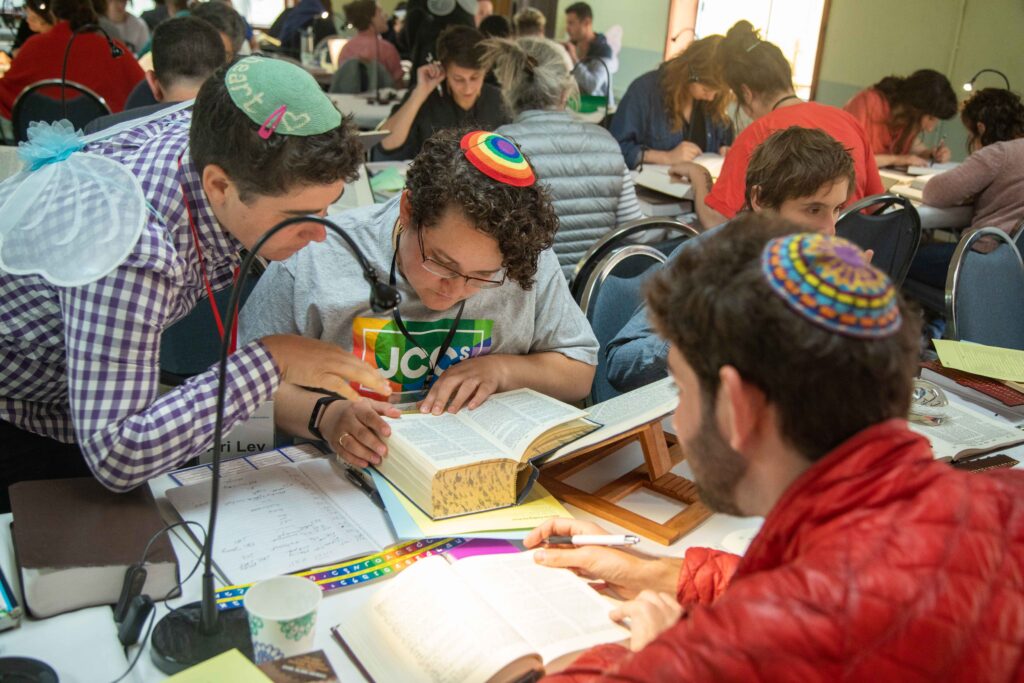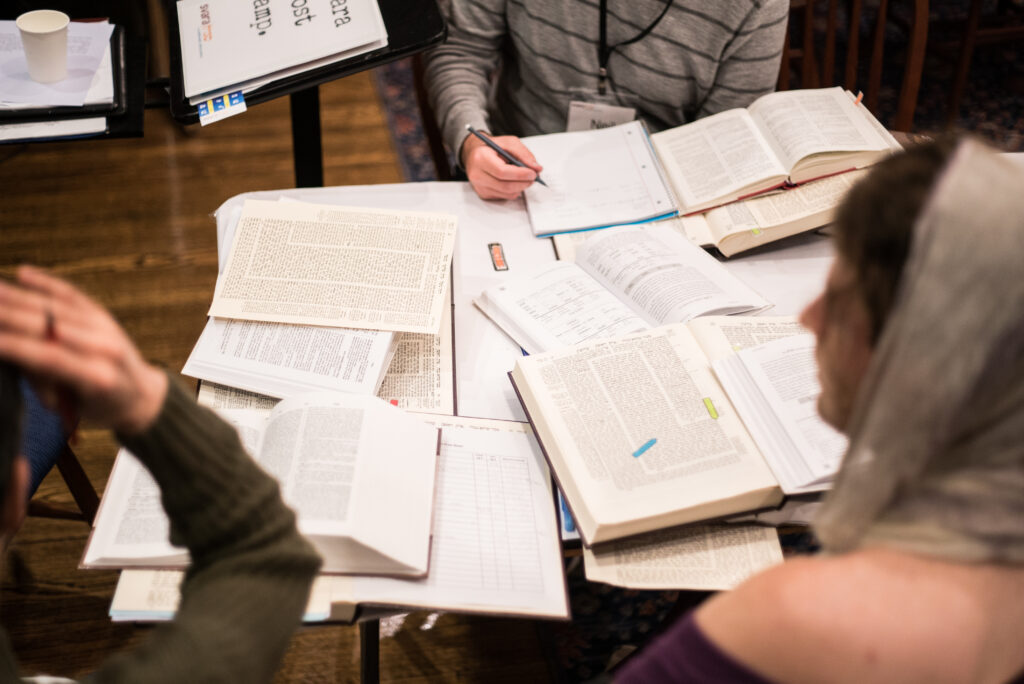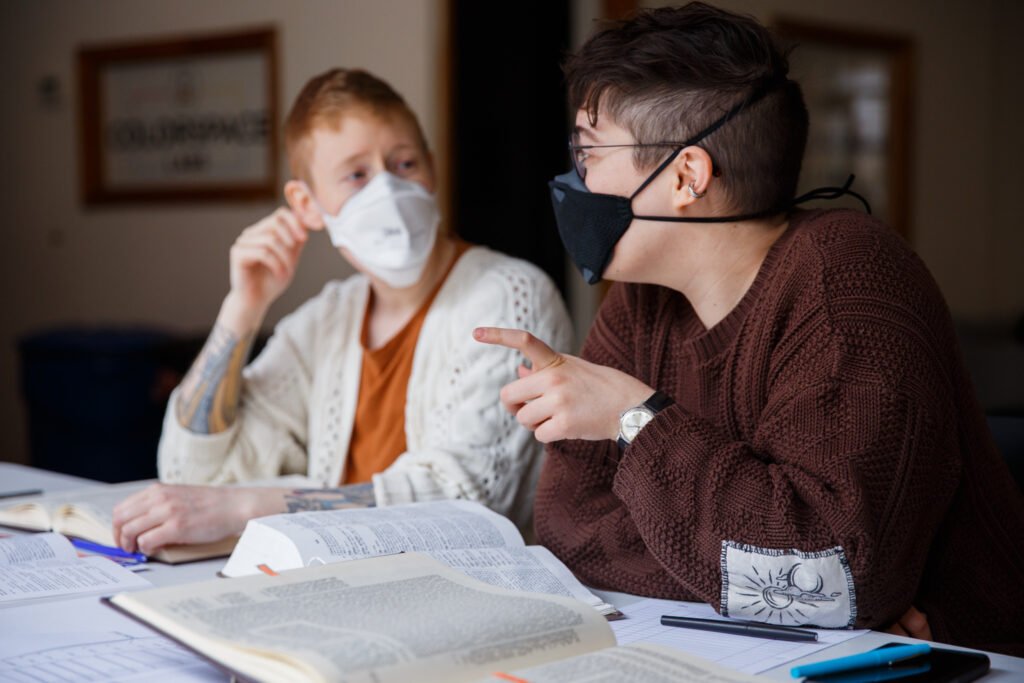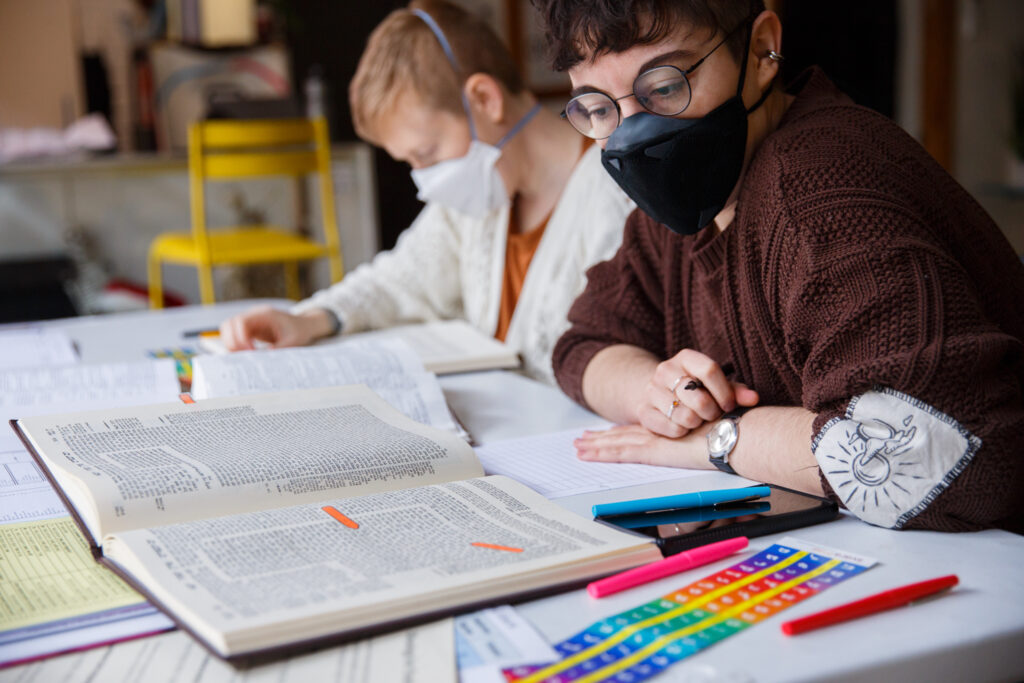For nearly every Purim in my twenties, I dressed as a man. The first year, my senior year of college, I drew a mustache and goatee on my face with eyeliner and borrowed my roommate Justin’s grey jeans. I wore a fitted white button-down that I bought for some nebulous idea of post-college professional life and my fancy black vest with a tie tucked into it. I finished it off with a backward baseball cap and my Converse. I remember standing in our carpeted bathroom in Bloomington, Indiana with the double sink and 10-foot-wide mirror while Justin tied his tie around my neck and talked me through the steps. Assessing my final look, I felt almost out of breath with giddiness and discomfort. I went to Chabad to celebrate the holiday. I had been attending Chabad dinners for most of my time in university and felt close to the Rabbi and Rebbetzin. As the night came to a close, I remember the Rabbi saying to me, over the drunken buzz around us, that I was an oracle. There’s a picture of me on Facebook from that night. I’ve looked at it more times than I care to admit, but that is more so an admission of how much I’ve looked at my own Facebook.
Time went on. The Cubs won the World Series. Trump got elected. I cut my hair. I started wearing white tees from the boy’s section of Target almost exclusively. I remember those early years: scouring secondhand stores for some shapeless vision of what I was looking for. All I knew was that I was looking for some undefined blend of masculinity and femininity and most importantly something that screamed: GAY! One of my favorite finds was an oversized white T-shirt that rested just under my neck in a way I liked, and I cut it so deep on the sides that the “arm holes” hung all the down to my waist. I also ended up with a crew neck tank top with an image of a kitten in a backward cap – really my ultimate gender expression – with its paws cartoonized into a heart shape, bubbling the words, “will you be mine?” Each year, on Purim, I borrowed less and less from the men around me, instead selecting something from my own closet.
Eventually, Purim became Justin Bieber time. Or, at least, whoever Justin Bieber was in my head, who, looking back, I think was actually Brian Littrell of the Backstreet Boys because I didn’t know very much about Justin Bieber. My take on this interesting choice on my part (subconsciously, of course): aging millennial updates to the zeitgeist of the time. Luckily people bought it because Justin Beiber and subconscious Brian Litrell costumes can pass for each other. Anyway, I would wear a soft cotton plaid button-up tied low around my waist, baggy khaki pants, a white crew neck tank top, a backward cap, and whatever remained from the dwindling collection of rings and necklaces I had in my possession.
In the Jewish creation story, G-d creates the world on top of, and with the material of, tohu vavohu, confusion and chaos. Creation rests upon chaos. Order rests upon disorder. The known rests upon the expanse of the unknown. According to the rabbis, this is the primordial structure upon which all life rests. And this cosmology echoes throughout the layers of the human experience. It starts at the largest scale: Creation itself. But it also is true of smaller human communities, and, it is true at the level of the self.
In community (based on national identity, ethnicity, language, religion, or some other identity) we create structure and order for ourselves through narrative. We tell a story about ourselves: about who we are, where we came from, what we stand for. These narratives give our lives meaning. They protect us against the chaos and the void underneath, which is the truth that our narrative isn’t the only true narrative. That other group’s narrative, over there, is true too, and it might be totally contradictory to ours. Wars are fought over this.
At the level of the self, we also tell stories to create meaning and structure: about what our values are, what our core traits are, which ultimately coheres into a narrative: I am a Jew, a queer person, a woman, a millennial, a child of divorced parents. But beneath that structure is something scary and unwieldy: I am made up of all of the matter of creation, which is to say everything, and there are many parts of who I am that I bury, subconsciously or not. Some of those parts might be better off staying buried most of the time. I am not interested in cultivating the part of me that is violent. But they all exist, and if I faced them all, I might risk losing myself, of losing the sense of who I am.
We need stories. They help us find sanity in a scary and uncontrollable world. They can create meaning and purpose, which is beautiful.
My teacher Joel Levy teaches that Purim comes along one day a year to remind us that all of this rests on tohu vavohu. It’s a time to remember that we are steeped in stories to create order and a sense of control in this life. It’s a time to remember that those are, in fact, stories. So much so that we flip the script and forget who the good guy is. As my teacher Benay Lappe puts it: every story will ultimately and inevitably crash. Purim is a crash we give ourselves. We let go of the reins of our fictional sense of control.
With Purim having just come and gone, I’m reminded that it can be a time to invite hidden parts of ourselves to be revealed. To expand our definition of ourselves.
I think there is a way to celebrate Purim where we let the chaos of the world / our chaos rise to the surface in a way that doesn’t swing us off of our storyline altogether – because we do need that story – but helps us grip a little less tightly to it, and perhaps lets us integrate some of the hidden into the revealed: on both the micro and macro scales.
I dressed up as Justin Bieber for Purim until I started looking like him every other day of the year, which makes me happy. But I am not suggesting that the loosening of the grip on Purim should always lead to a transformation like that. I think the goal is to remind us that we hold tightly onto stories so that we can see them for what they are, and to see how they play out in material reality. Is this story serving me and others? Is it harmful? And ultimately, to give us a chance to shake the stories loose just a little bit, if we want, to bring more peace, more wholeness, less white-knuckling.
On the macro level, Purim is an opportunity for us as Jews to witness our collective underbelly: to confront Jewish violence and darkness. It is also an opportunity, through the act of easing the reins on our collective narrative, to ask ourselves about how our white-knuckling of our narrative is hurting us and others. Not to let go of the narrative the next day, but, G-d willing, to hold it a little less tightly, to poke at its holes and investigate its shadows.
As the month of Adar ushers us towards Nissan, may we continue to use Purim’s injunctions of flipping the script, dressing up, radical generosity, and caring for the poor to remind ourselves that we have very little control in this scary and dangerous and sometimes horrible world, but that we have some potent antidotes. We have each other. We can tell and reshape stories. We have ourselves. Even with Purim behind us for the year, may it continue to move us towards stories that can withstand the reality that they are simply that – stories – and that our stories coexist with others that are seemingly contradictory, and that’s okay. May we look compassionately at parts of ourselves that we don’t like, that we are afraid to show, or that we just don’t yet know how to show. May it be an act of tikkun adam tikkun olam: healing ourselves leads to healing the world. May it move our world towards wholeness, and please G-d, peace.
A version of this essay was featured in All That’s Left’s collection entitled “For Such a Time as This: 5784 Purim Reader, a Series”







